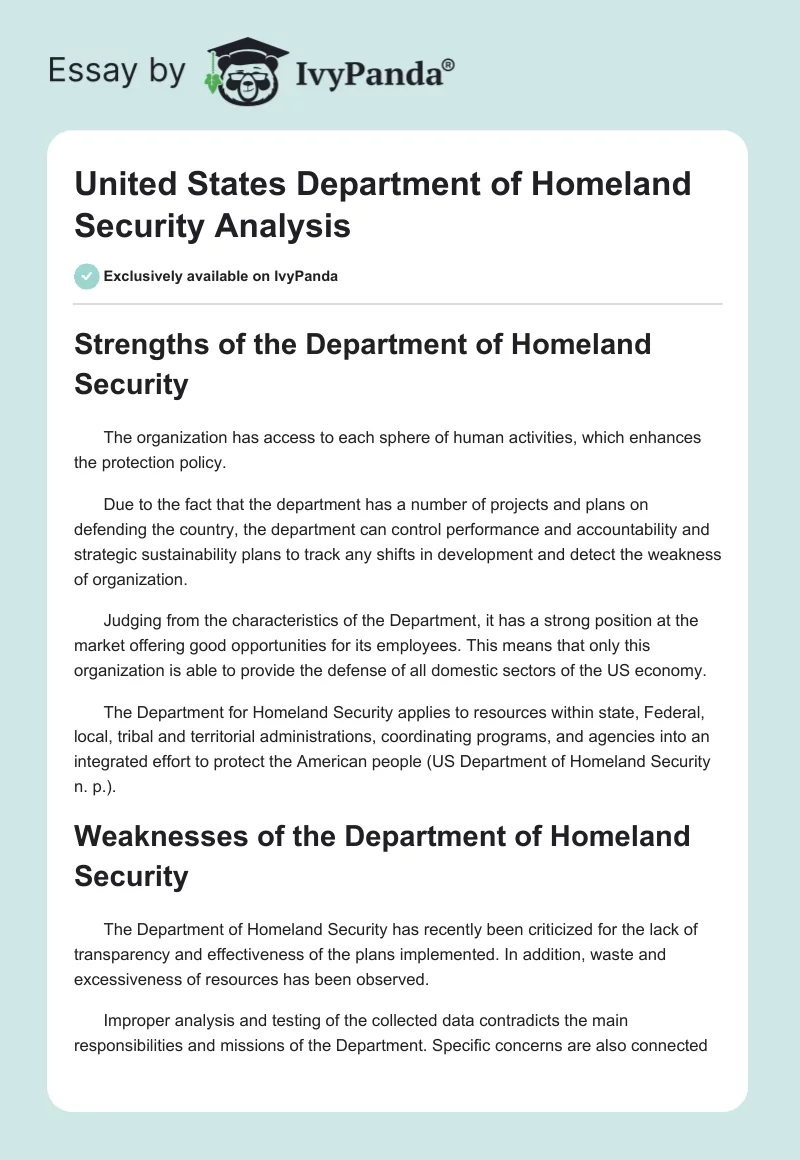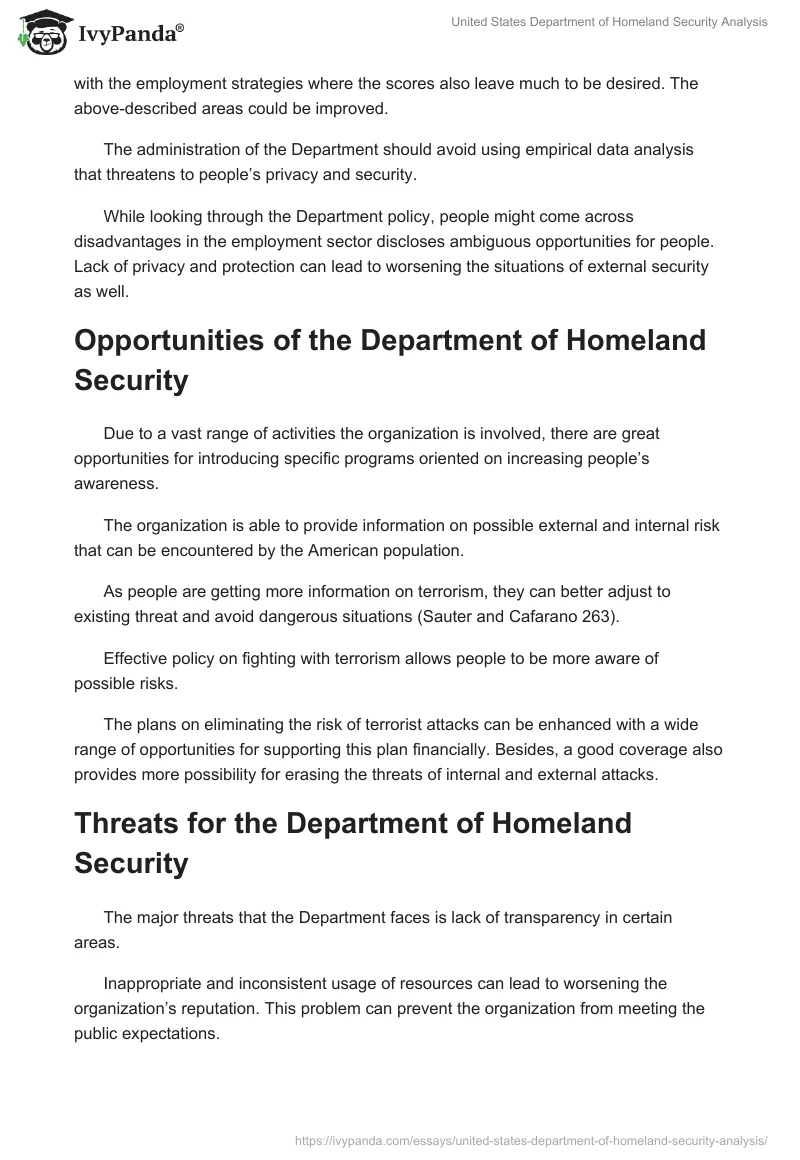Strengths of the Department of Homeland Security
The organization has access to each sphere of human activities, which enhances the protection policy.
Due to the fact that the department has a number of projects and plans on defending the country, the department can control performance and accountability and strategic sustainability plans to track any shifts in development and detect the weakness of organization.
Judging from the characteristics of the Department, it has a strong position at the market offering good opportunities for its employees. This means that only this organization is able to provide the defense of all domestic sectors of the US economy.
The Department for Homeland Security applies to resources within state, Federal, local, tribal and territorial administrations, coordinating programs, and agencies into an integrated effort to protect the American people (US Department of Homeland Security n. p.).
Weaknesses of the Department of Homeland Security
The Department of Homeland Security has recently been criticized for the lack of transparency and effectiveness of the plans implemented. In addition, waste and excessiveness of resources has been observed.
Improper analysis and testing of the collected data contradicts the main responsibilities and missions of the Department. Specific concerns are also connected with the employment strategies where the scores also leave much to be desired. The above-described areas could be improved.
The administration of the Department should avoid using empirical data analysis that threatens to people’s privacy and security.
While looking through the Department policy, people might come across disadvantages in the employment sector discloses ambiguous opportunities for people. Lack of privacy and protection can lead to worsening the situations of external security as well.
Opportunities of the Department of Homeland Security
Due to a vast range of activities the organization is involved, there are great opportunities for introducing specific programs oriented on increasing people’s awareness.
The organization is able to provide information on possible external and internal risk that can be encountered by the American population.
As people are getting more information on terrorism, they can better adjust to existing threat and avoid dangerous situations (Sauter and Cafarano 263).
Effective policy on fighting with terrorism allows people to be more aware of possible risks.
The plans on eliminating the risk of terrorist attacks can be enhanced with a wide range of opportunities for supporting this plan financially. Besides, a good coverage also provides more possibility for erasing the threats of internal and external attacks.
Threats for the Department of Homeland Security
The major threats that the Department faces is lack of transparency in certain areas.
Inappropriate and inconsistent usage of resources can lead to worsening the organization’s reputation. This problem can prevent the organization from meeting the public expectations.
A failure to use official sources and data for presenting statistical information can also create difficulties in accepting this data.
People will be more reluctant to apply to the survey results that were not obtained in a transparent way. Poorly planned projects and programs can also deprive the Department of the American people’s recognition.
Impossibility to effectively use the resources can lead the loss of people credence in the reliance of the plans and programs implemented by the Department.
Excessive focus on terrorist acts elimination provides less attention to other sectors of social activities.
Lack of privacy can also negatively contribute to people’s participation in the Department activities.
Works Cited
US. Department of Homeland Security. Annual Financial Report. Homeland Security. 2010. Web.
Sauter, Mark and Cafarano, James Jay. Homeland Security: a Complete Guide to Understanding, Preventing and Surviving Terrorism. US: McGraw-Hill Professional, 2005. Print.


